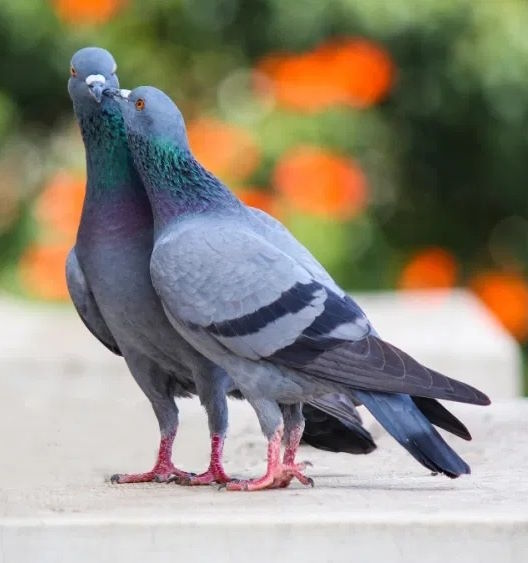How Can You Control Pigeon Populations Without Affecting Other Local Species? Effective Strategies for Urban Wildlife Management

Many cities struggle with large pigeon populations, but simply getting rid of them can end up harming other birds and animals in the area. Controlling pigeons can be done safely by using strategies that focus on making areas less attractive for pigeons without disturbing other local wildlife. Things like blocking off nesting spaces, removing leftover food, and using special deterrents can help lower pigeon numbers.
For those looking for more solutions, OvoControl's guide on effective ways to get rid of pigeons offers options that reduce pigeon numbers without using harsh chemicals or dangerous traps. These methods help keep the balance with other species while still addressing the issue.
By following steps that are gentle on the environment, people can protect native birds and animals while dealing with nuisance pigeons. Making small changes, like stopping feeding and sealing entry points, can make a big difference.
Effective and Selective Pigeon Population Control
Managing pigeons in cities or parks requires understanding where pigeons live, how they breed, and what attracts them. Using personal observation and specific strategies, it's possible to control pigeon numbers while avoiding harm to other birds or animals.
Understanding Pigeon Behavior and Ecology
Pigeons thrive where they find food, water, and safe places to nest. They often gather near open trash containers, outdoor eating areas, and buildings with easy roosting spots. Pigeons are most active during the day and return to the same places each night.
They breed all year, with peak activity in spring and summer. Removing food sources, such as cleaning up crumbs and not feeding pigeons, makes these sites less attractive. Blocking off favorite roosting and nesting spots, like building ledges and eaves, can also discourage them from settling in.
Pigeons are social and will return to areas they know are safe and have resources. Reducing access to food and nesting spots will make these locations less appealing over time.
Physical Barriers and Habitat Modification
Physical barriers are a simple way to prevent pigeons from landing or nesting. Installing bird spikes, nets, or wire mesh on ledges and roofs works well. These items create surfaces that pigeons cannot stand or build nests on. They are safe to use around other birds because they don't trap or harm them.
Sealing gaps under solar panels and covering open vents will block nesting sites. To further change the habitat, remove standing water and clean up waste food promptly. List of habitat changes:
- Use bird spikes on ledges
- Place netting over open spaces
- Seal gaps and vents
- Regularly clean up food and water
Changes like these help to move pigeons along without affecting other animals.
Targeted Birth Control for Pigeons
A selective way to reduce the pigeon population over time is by using special bird birth control methods. These are usually treated food pellets that only work with pigeons due to their unique eating patterns and the timing of feeding. Other birds are less likely to consume these pellets because they eat at different times or prefer different food.
Another method is egg removal or egg replacement. This means removing eggs from nests or swapping them with fake ones so young pigeons are not born. Workers regularly inspect nests and act before the eggs hatch. These methods lower pigeon numbers gradually and do not disturb other local wildlife.
Preventing Impact on Other Local Species
Using methods to control pigeons can sometimes affect other birds and animals. It is important to choose strategies that only target pigeons and respect the rules about wildlife.
Minimizing Risks to Non-Target Wildlife
Physical barriers, like bird netting or spikes, should be designed to block pigeons but still let smaller birds or harmless creatures move through or around them. When using visual or sound deterrents, such as reflective tape and fake predators, it helps to place them in areas where only pigeons gather so other animals are less likely to be disturbed.
Food sources should be managed carefully. Feeding pigeons or leaving food waste attracts them, but it can also bring in other animals by accident. Keeping areas clean and storing food properly lowers the chance of disrupting different species.
If birth control is used for pigeons, it's important to pick products created just for pigeons and avoid anything that could be accidentally eaten by others. Regular checks make sure the methods work and do not hurt the nearby wildlife.
Legal and Ethical Considerations
Laws protect many native birds and animals. Any action taken must follow these rules to avoid fines or harm to protected species. Before setting traps or using chemicals, it is necessary to make sure they are not banned or restricted in the area.
Ethical choices matter. Humane methods, like blocking access to nesting spots or using safe repellents, should be the first option. Any action that can cause pain or stress to other species should be avoided.
It is also important to inform people about not feeding pigeons for both legal and ethical reasons. Education can reduce the need for stronger control methods and decrease risks to other animals. Proper planning helps people balance pigeon management with the safety and well-being of all wildlife in the area.
Conclusion
Managing pigeon populations can be done using safe and humane steps. Methods like habitat changes, feeding controls, and birth control help reduce pigeon numbers without putting other local animals at risk.
Simple actions, such as not feeding pigeons in public places, can make a difference. These steps keep the ecosystem stable while still addressing pigeon problems.
839GYLCCC1992



Leave a Reply